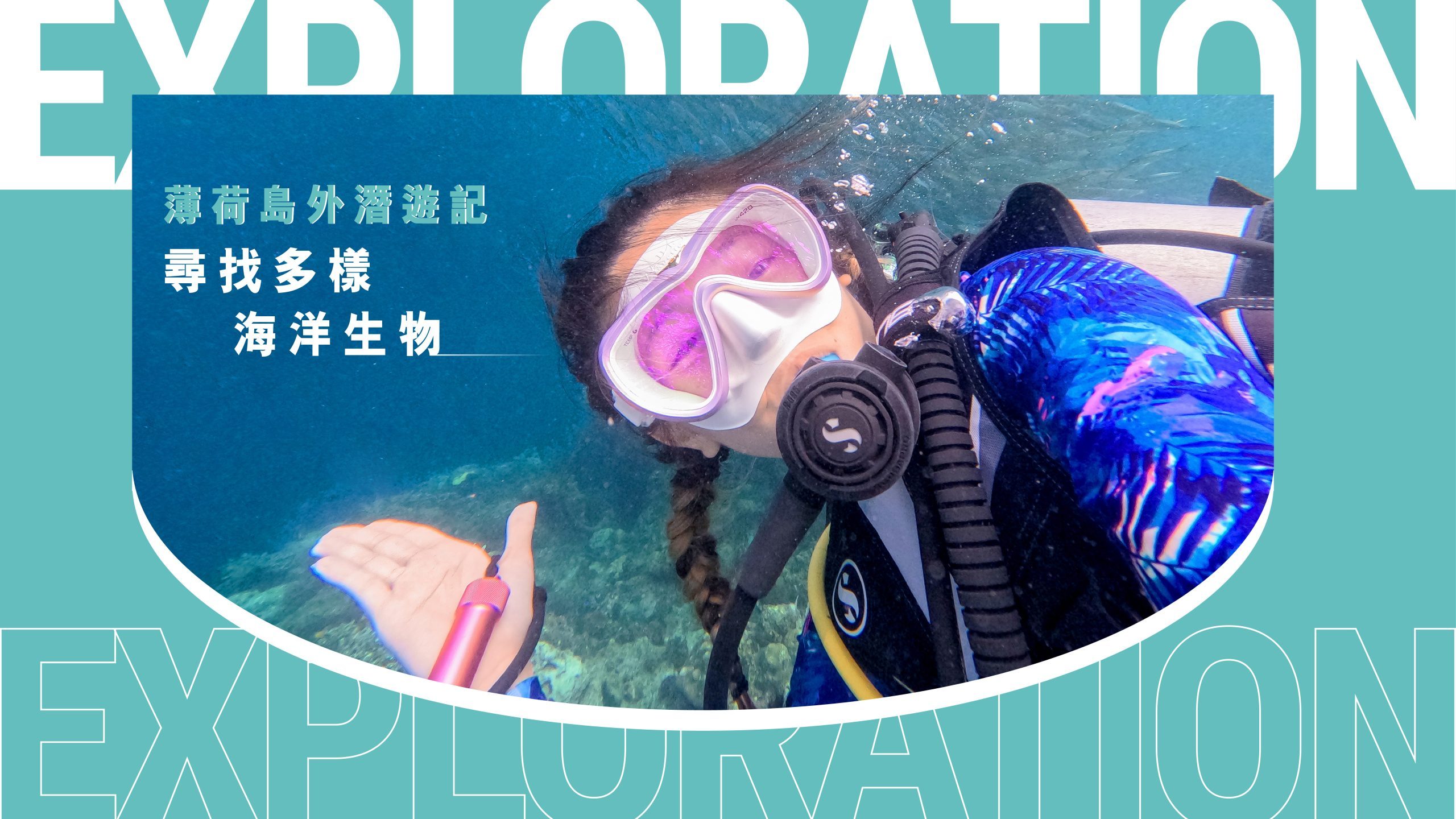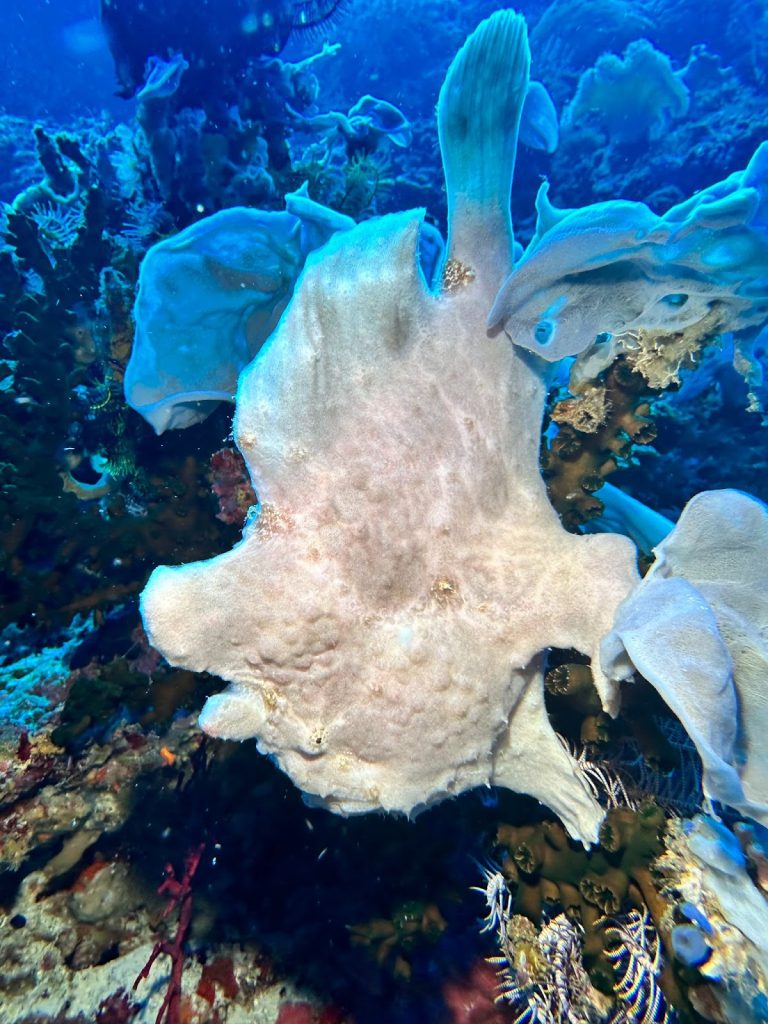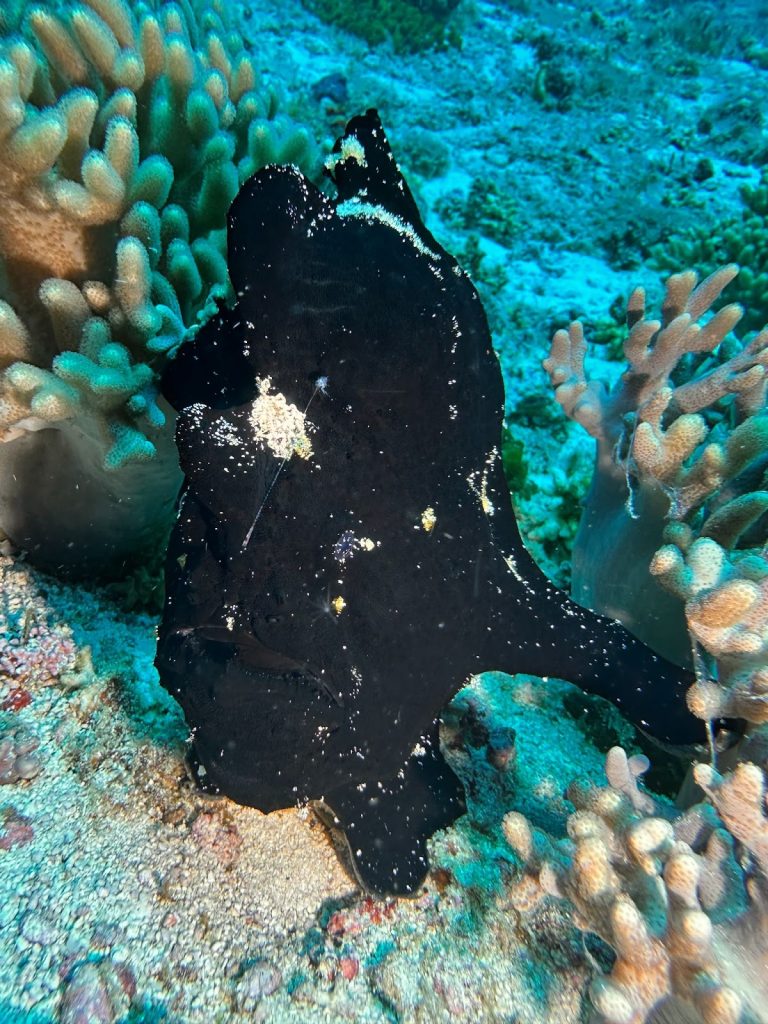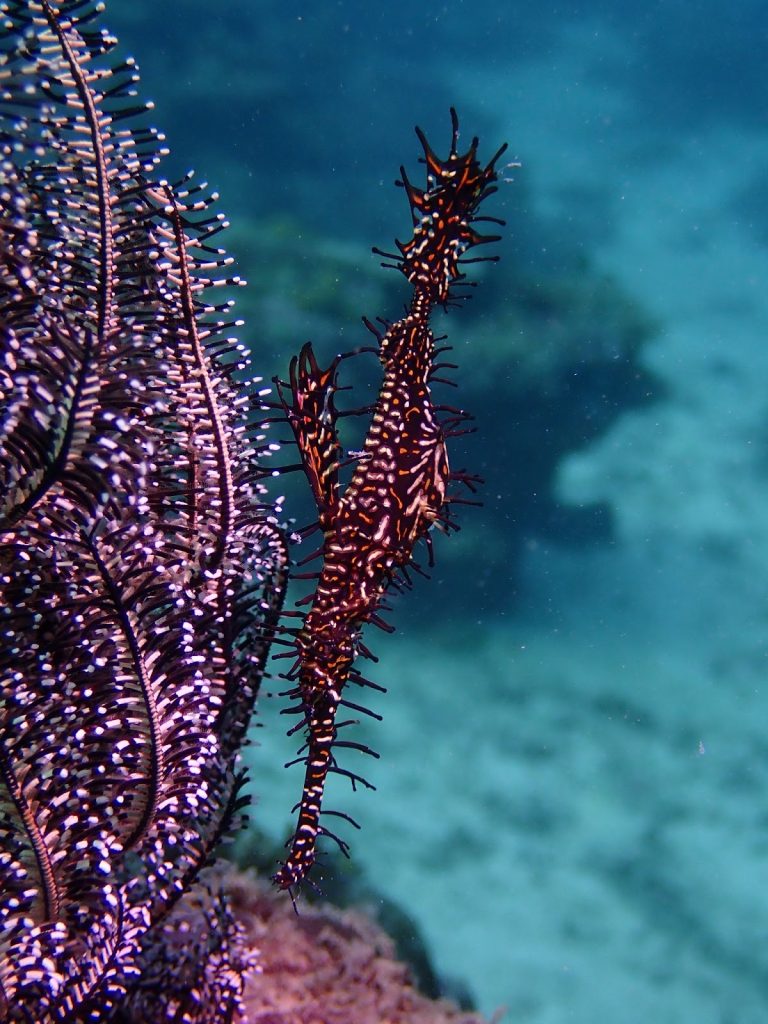On the first day after our arrival, we completed a check dive and officially began our daily underwater adventure with three dives. Bohol offers mostly wall dives and slope dives, with calm water currents, high visibility, and a consistent water temperature of 26 to 29 degrees Celsius throughout the year. The dive sites are surrounded by coral reefs, with the diving activities starting at the reefs and then descending along the cliffs for a wall dive. It’s an ideal location for beginners to learn and for experienced divers to upgrade their skills and gain more experience.
Every morning, around 9 am, we would take a shuttle from the hotel to Alona Beach, where we would board a boat to explore the various islands near Bohol. Here are some of the dive sites we visited on this trip.
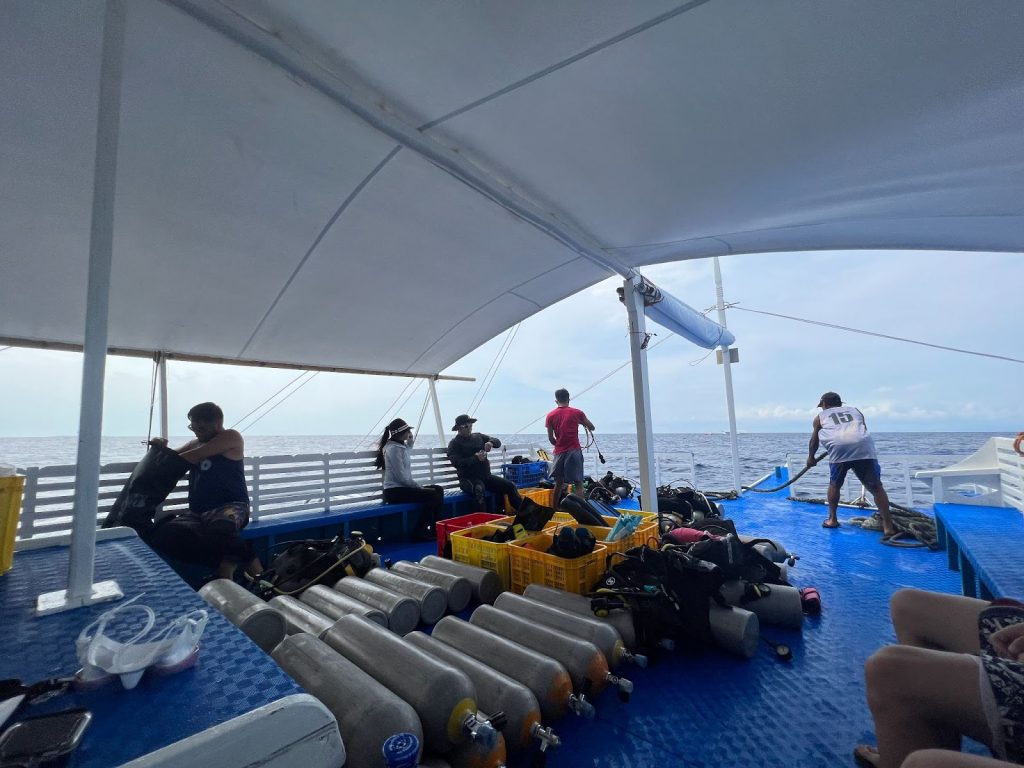
We booked our trip to the Balicasag dive site through Mayfair Resort’s dive shop. Balicasag is an island surrounded by rare black coral reefs and is designated as a marine protected area. It’s famous for its large fault line. Due to the significant depth difference, it’s important to maintain neutral buoyancy control and keep track of residual nitrogen and no-decompression time.
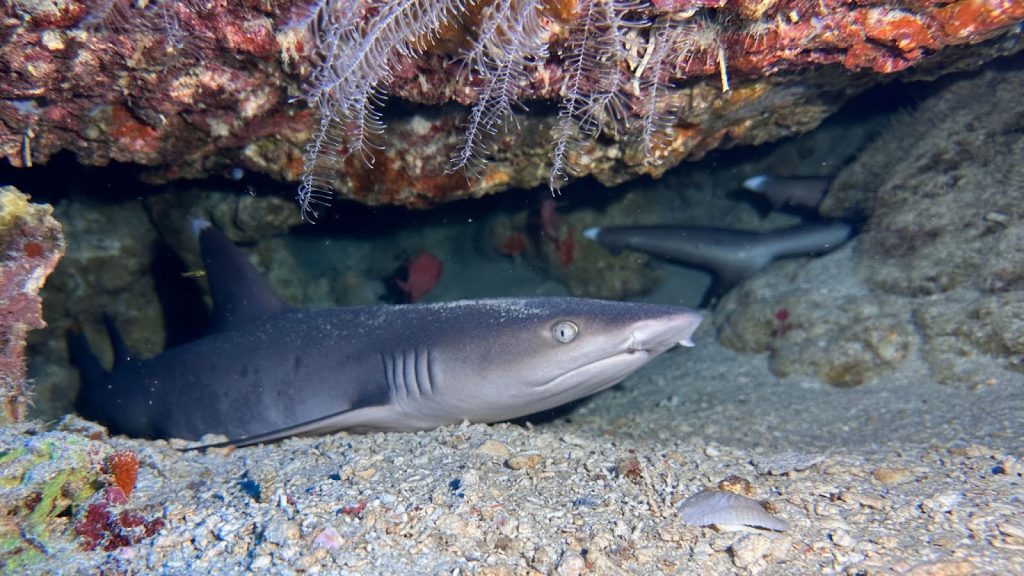
Balicasag is about a 30-minute boat ride from Alona Beach, our starting point. As a marine protected area, fishing is prohibited, and there is a daily limit on the number of divers allowed, with only about 300 divers accepted. Therefore, it’s crucial to book in advance as spots are limited. We were incredibly fortunate to encounter oceanic whitetip sharks resting among the rocks. Did you notice the fins of the little sharks behind? There were more than one!
The next day, we went to the second dive site, Pamilacan. It takes about an hour by boat from Alona Beach, and due to its remote location, there are relatively fewer people around. Besides having a fish sanctuary, this place is also filled with abundant soft corals at around 30 meters deep. In addition to various anemones and sea turtles, there is also a chance to encounter “Jack fish Storm” or “barracuda Storm”.
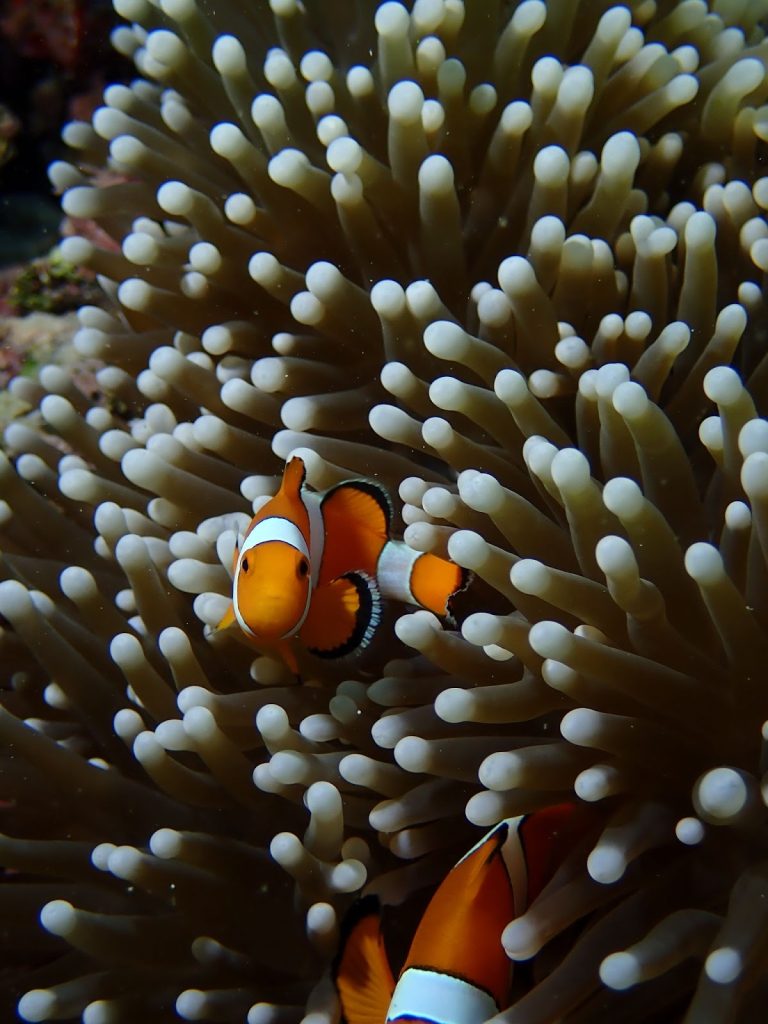
When it comes to clownfish, the ones in Hong Kong are notorious for being “fierce” and highly territorial. They are even known as the “attacking clownfish.” Most divers in Hong Kong have experienced being bitten by these clownfish. (I, too, have fallen victim to their bites while trying to take photos. Ever since, I don’t find Hong Kong clownfish as cute anymore.) However, clownfish in other locations outside of Hong Kong tend to be more shy and less aggressive, probably about ten times less aggressive…
We were incredibly lucky this time! We had the amazing opportunity to witness turtles up close as they peacefully grazed on seagrass. We even encountered an exhilarating fish frenzy!
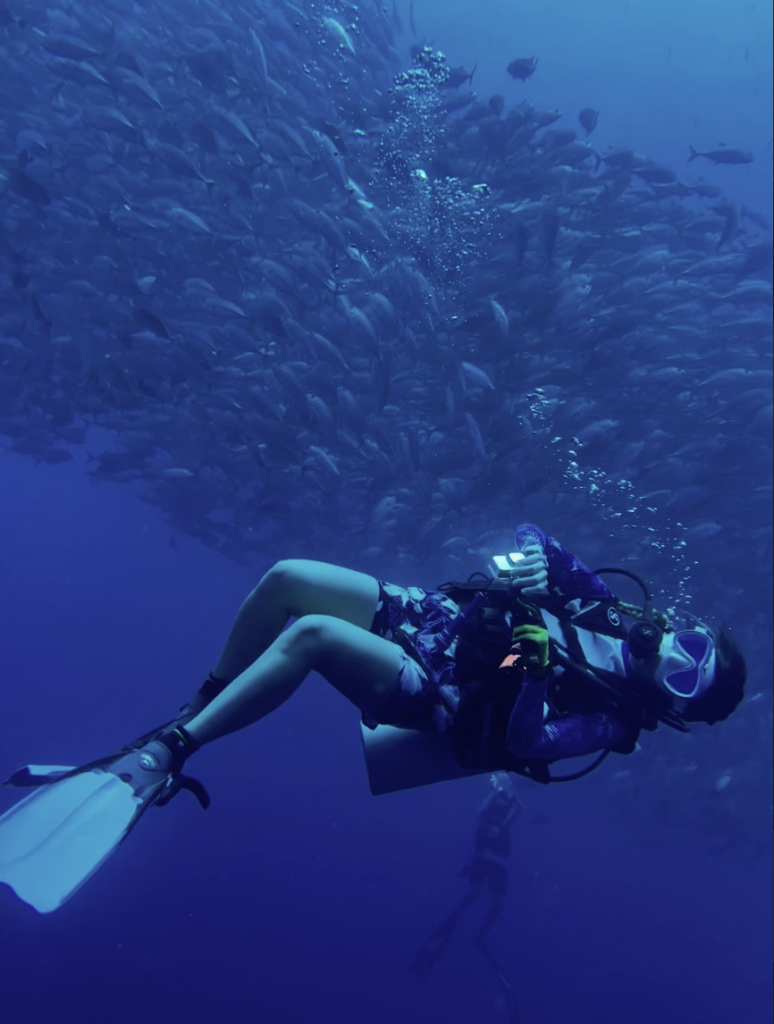

Apart from the aforementioned dive sites, we also explored Momo Beach and Snake Island, both offering unique underwater landscapes and stunning “glass-like” visibility. The underwater visibility in the Philippines is truly ten times better than in Hong Kong. Every time I descended into the water, I couldn’t help but be in awe of the clarity and enjoyed every moment. (However, there are occasional days of clear water in Hong Kong, but they are quite rare.)
Marine animals with the ability to camouflage themselves
When it comes to masters of underwater camouflage, one creature that stands out is the adorable frogfish, often referred to as the “froggy fish” or the walking fish. There are numerous species of frogfish, and their fins resemble the feet of a frog, giving them a fascinating walking-like motion.
Typically, frogfish prefer to remain stationary, perched on rocks or near corals, rather than actively swimming. If they need to move, they rely on their fins to slowly walk. Due to their limited range of movement, getting a close encounter with them for photography is quite rare. Their ability to blend in with their surroundings, often choosing areas with protective coloration, requires keen observation skills. During this trip, one of my less experienced diving companions was curious about what we were observing until he saw the photos and finally spotted the frogfish himself!
In addition to encountering the more common black frogfish, we were fortunate enough to witness a completely white one, resembling a bleached version. It perfectly blended into the white block-shaped coral reefs, making it a true challenge to spot.
Witnessing a Colossal Sea Turtle Gobbling Seagrass with Joy
In the stunning dive spots of Bohol Island, Philippines, encountering sea turtles is a frequent occurrence. These remarkable creatures possess a robust physique, with an incredibly thick shell.
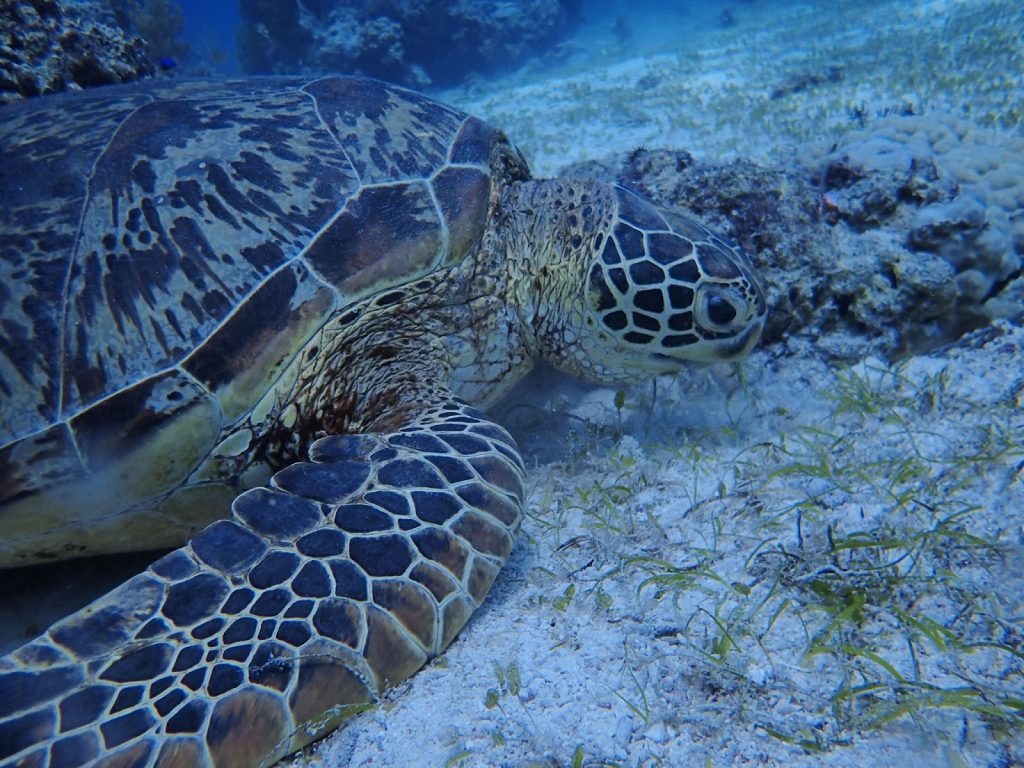
Facing the “Villains” of the Underwater World
Moray eels and octopuses are commonly found in tropical and temperate waters, often taking up residence in the warm coral reefs of the ocean. Moray eels can be seen with their heads protruding from rocky crevices, their mouths opening and closing in what may seem like an aggressive manner. However, this behavior is simply their unique way of breathing, allowing water to flow over their gills.
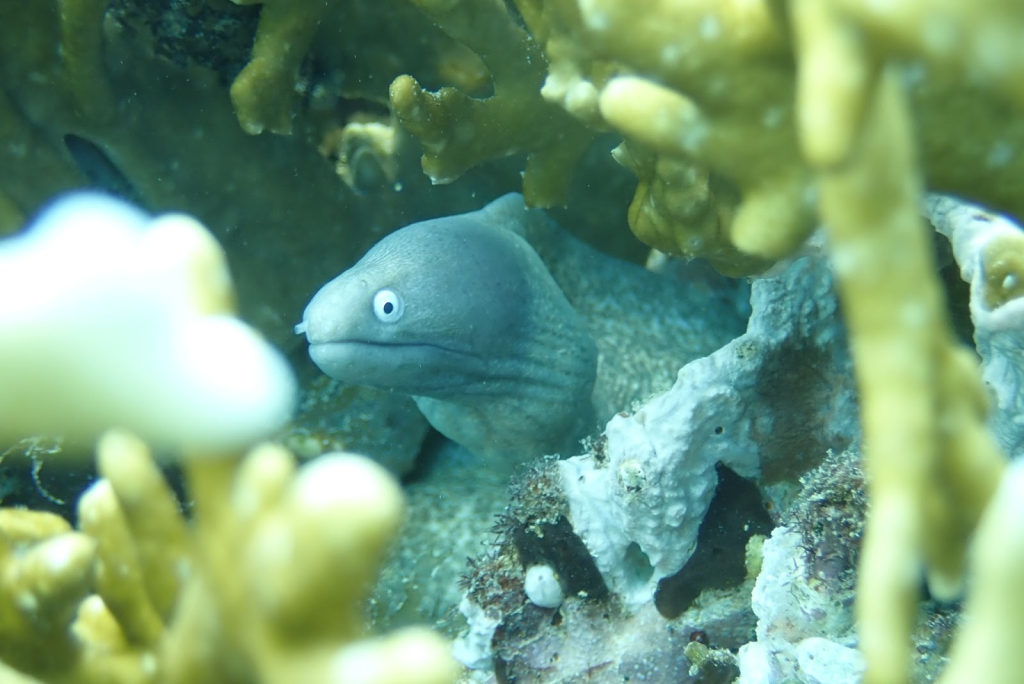
Although octopuses are quite prevalent, they are not easy to spot as they rely on camouflage, often blending seamlessly into the coral or hiding within it. Their remarkable ability to change color comes from pigment cells within their bodies. When faced with danger or when stationary, they can alter their body coloration to effectively blend in with their surroundings, evading predators and seizing opportunities for hunting. Capturing clear photographs of octopuses often requires the use of additional lighting equipment to enhance the visibility.
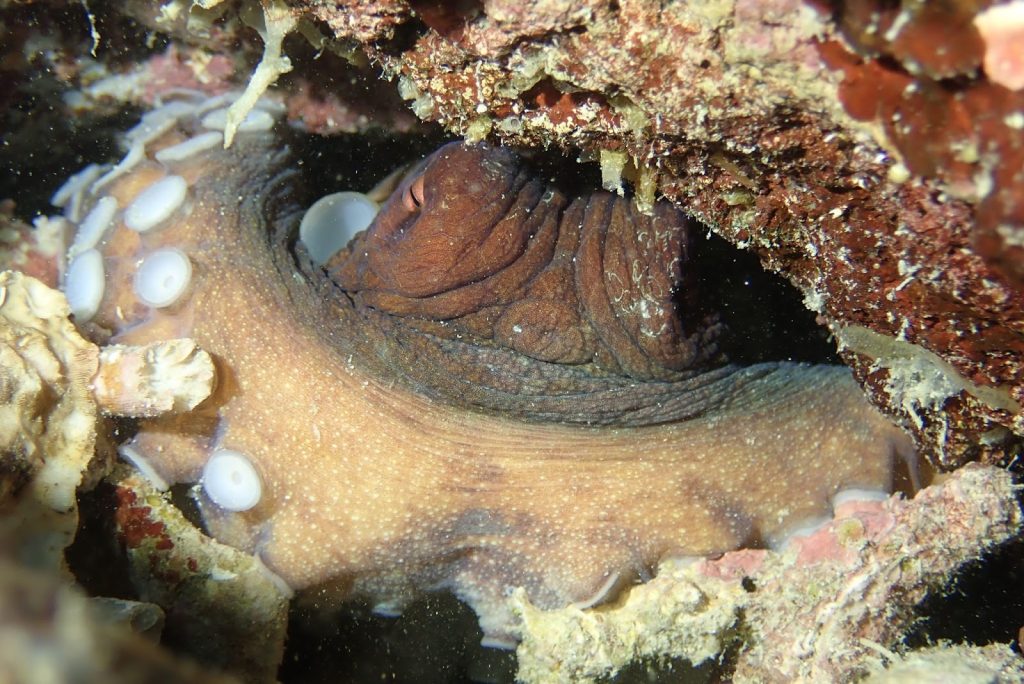
Night diving in Alona Beach
Night diving is one of my personal favorite underwater experiences. It adds an element of mystery and excitement, transforming the underwater world into a realm of enchantment. The most notable difference between night diving and daytime diving is the complete darkness that envelops you once the sun sets. Equipped with a dive light, you encounter a mesmerizing array of marine creatures whose colors are no longer influenced by sunlight, appearing more vividly blue or green. At night, the true colors of marine life come to life, including vibrant shades of red and orange. Furthermore, many marine organisms that hide during the day emerge at night, such as various species of crabs and sea slugs. Below are some captivating photos from a night dive at Alona Beach, showcasing enchanting encounters with hermit crabs, sea hares, and more.
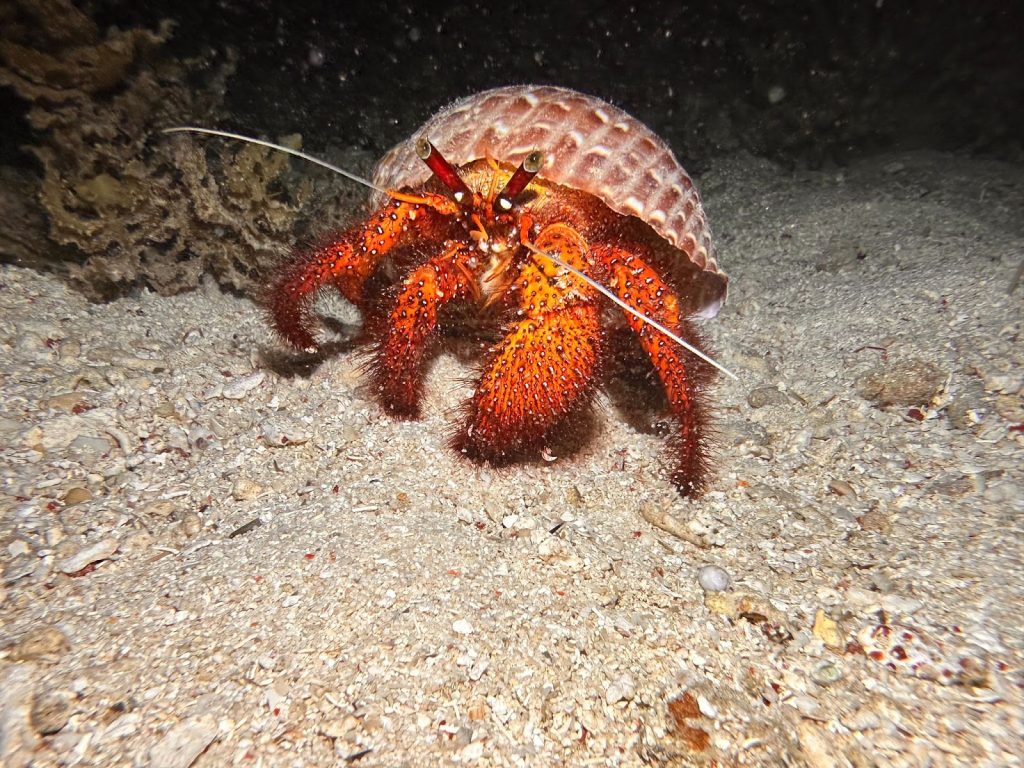
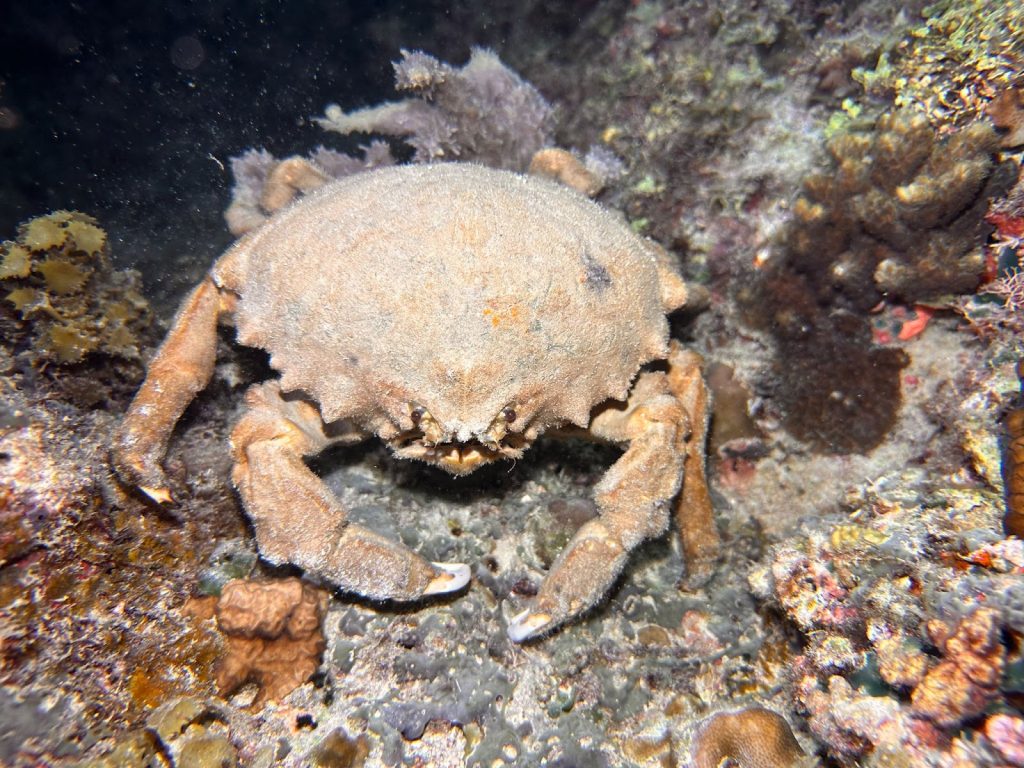
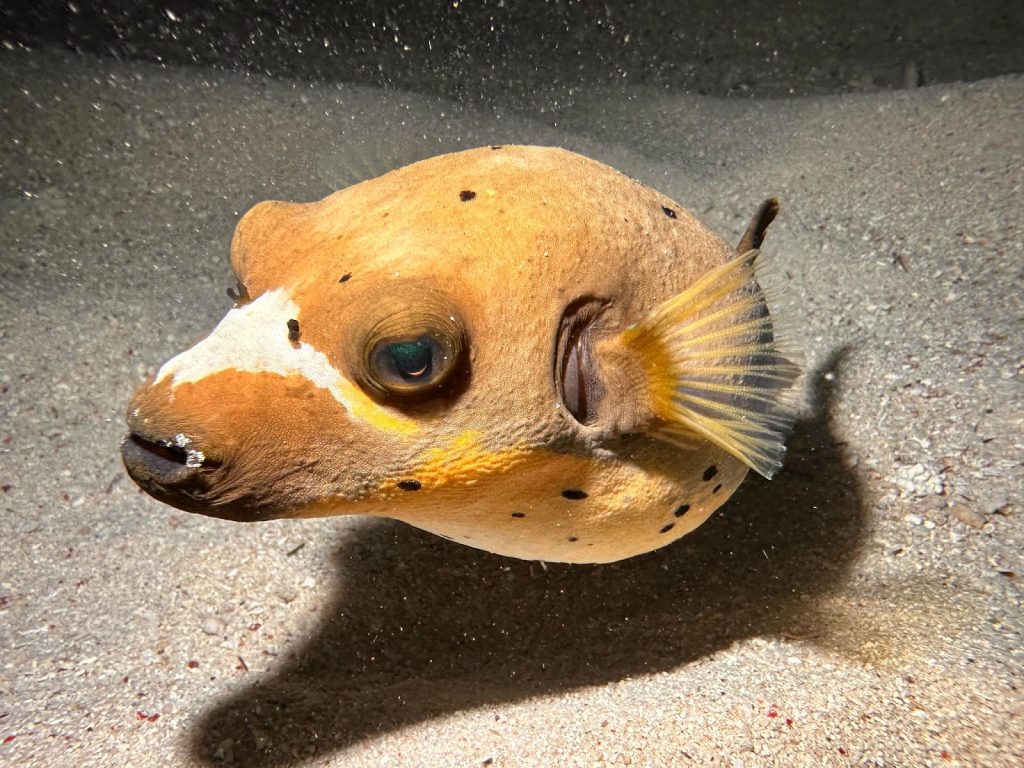
In the next article, I will share my “Sea Slug” on this trip, as well as my first experience diving to see an airplane wreck!

